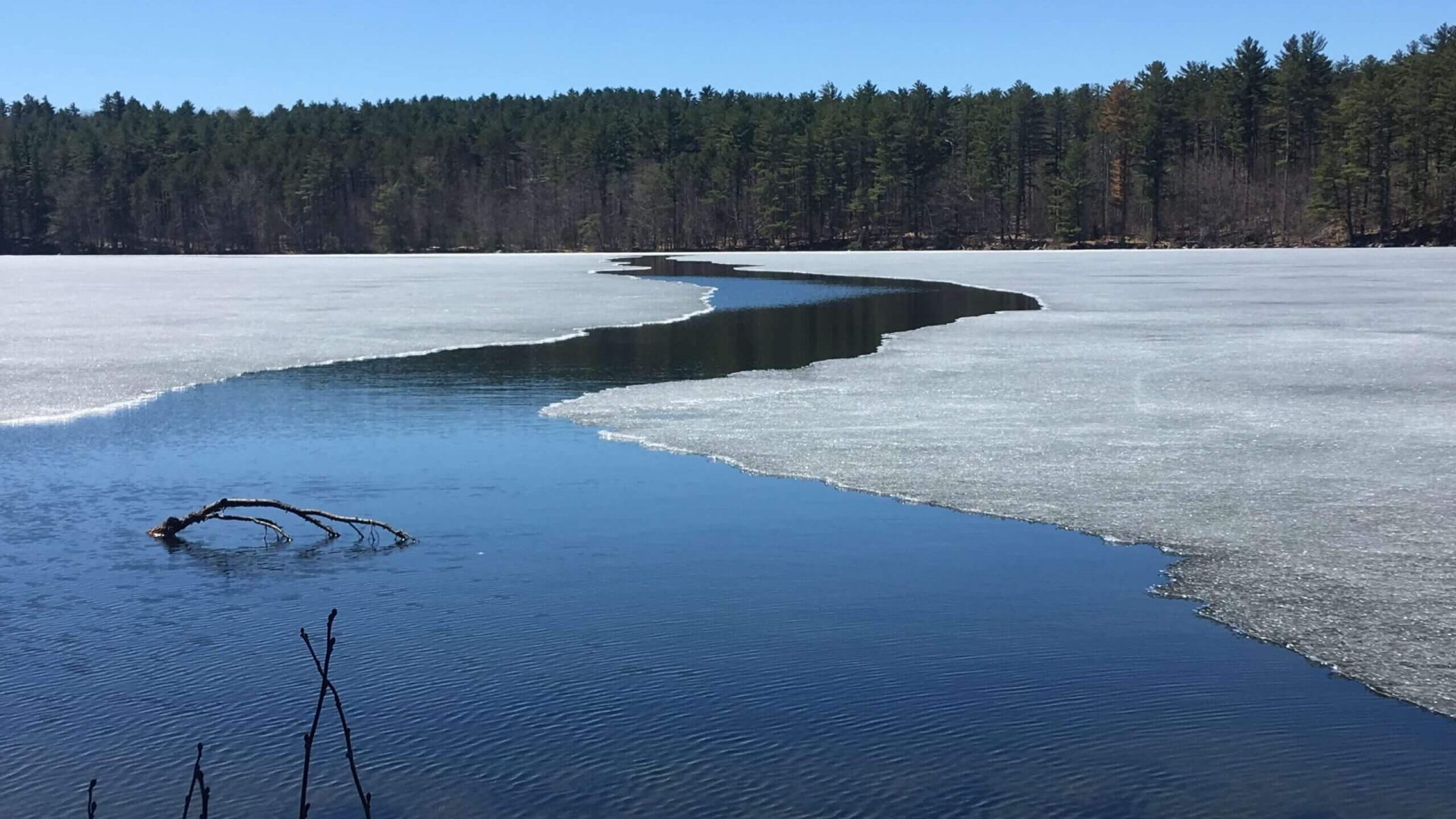Other Lake Phenomena

Quick Links
LSM Programs & Tools
Latest News from LSM
Forms & Data Sheets
Other Lake Phenomena
There are many factors besides water quality and invasive aquatic species that can affect lake health, and the LSM helps train volunteer citizen scientists to monitors and track a number of these. Below are brief descriptions of other types of lake health indicators and links to more information.
Ice-in is the date that a lake finally and completely ices over for the winter, and ice-out is the date when the majority of the lake ice has melted in the spring. Ice cover data is an important indicator of global climate change, and when combined with water quality data, can tell us a great deal about the effect of global climate change on our lakes.
Virtually all natural characteristics of a lake are influenced by the land area, or watershed, that drains to the lake. Human activities can alter the natural protective features of lake watersheds and can result in significant degradation of water quality and aquatic habitat over time. Watershed surveys help to identify and subsequently resolve problems in the watershed that are contributing to water quality decline.
Gloeotrichia echinulata is a colonial bluegreen algae that forms tiny spheres which can be seen without magnification. While “Gloeo” has been known to exist in Maine, it has typically been observed in late summer and at low densities. However, during the past decade, Gloeo appears to have been on the increase. Volunteer lake monitors are now being trained to identify and quantify colonies while taking transparency readings.
Metaphyton is a group of filamentous algae that form blooms in shallow areas of the lake. The significance of possible increases in metaphyton growth in some Maine lakes is not fully understood, and interest in the role that this group of algae play in lake ecosystems in growing. The LSM has developed a process to allow volunteers to identify, document and track the growth of metaphyton.
Chinese mystery snails are native to Southeast Asia, and are half-again as large as Maine’s largest native freshwater snail. Since their introduction, Chinese mystery snails have spread to many parts of the United States, and can now be found in a number of Maine lakes. LSM currently manages a statewide database on reported sightings.
Several non-native crayfish species are now known to be in Maine. Working with a team of researchers, the LSM is looking for volunteers to help determine the statewide distribution of these and other crayfish species.
